Making Meat: How Bad is Animal Farming for the Planet?
6 minute read
Updated on: 14 Dec 2020
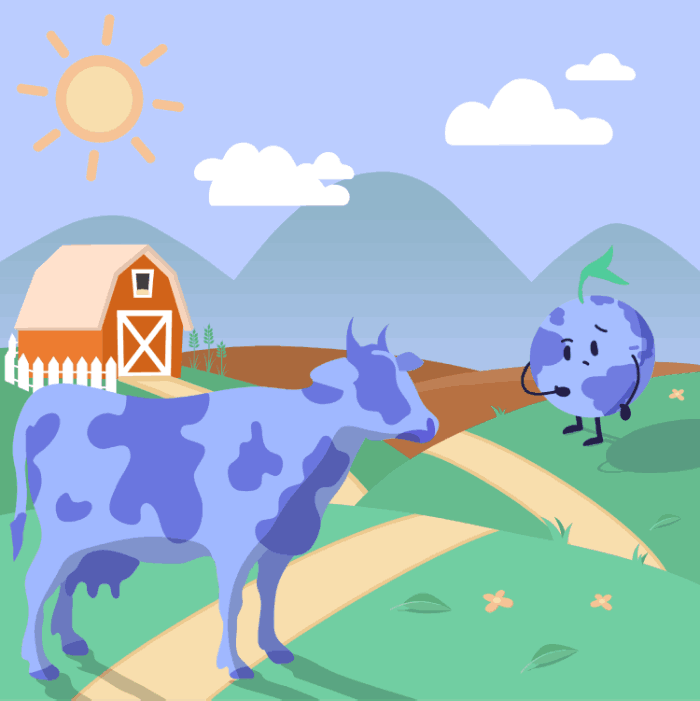
Reducing emissions from meat
What’s so bad about meat?
Animal farming accounts for 14.5% of man-made greenhouse gas emissions and, despite providing only 18% of the world’s calories, it occupies 77% of farm land
. This is largely because land is required to grow animal feed as well as the animals themselves.
Indeed, feed production accounts for 41% of the emissions from animal farming.
This makes meat a very inefficient way of getting energy.
Are all animal products equally bad?
Cows and sheep (known as ruminants) contribute more to emissions than other animal products. This is largely due to how they digest their food.
To break down grass and hay, they rely on a process called enteric fermentation which is carried out by the millions of microbes that live in their stomachs. During this process, the microbes produce methane (a greenhouse gas that is more powerful than CO₂) which the ruminant then burps out
.

Enteric Fermentation
Animal manure and manure management contribute further to CH₄ emissions, and also produce the greenhouse gas nitrous oxide (N₂O).
Overall, ruminants produce 2.7 Gt CO₂eq of CH₄ every year, accounting for about 5.5% of total greenhouse gas emissions from human activities!
What about fish?
20% of people rely on seafood as their primary source of protein. However, over a third of wild fish populations are overexploited
, meaning that fish are removed from the sea faster than they can reproduce
.
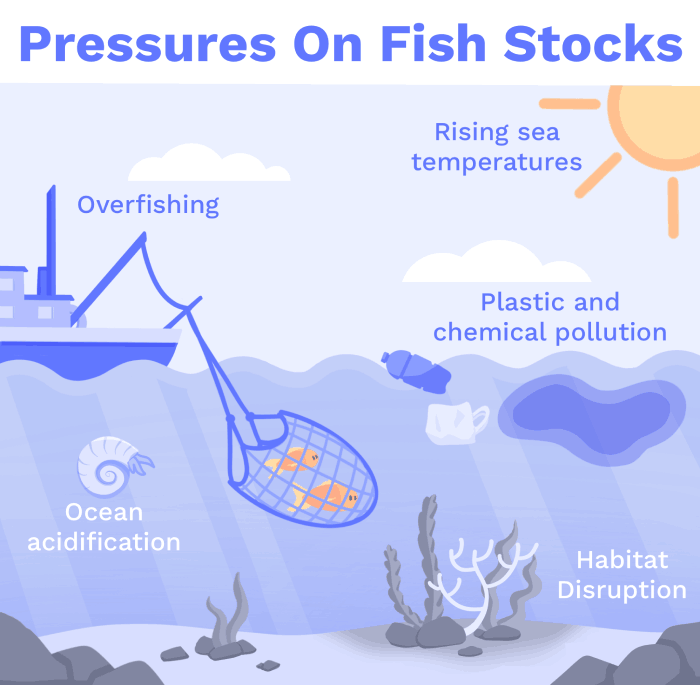
Pressures on fish stocks
As well as endangering wild fish, some fishing methods disturb the seafloor and cause stored carbon to be released into the atmosphere.
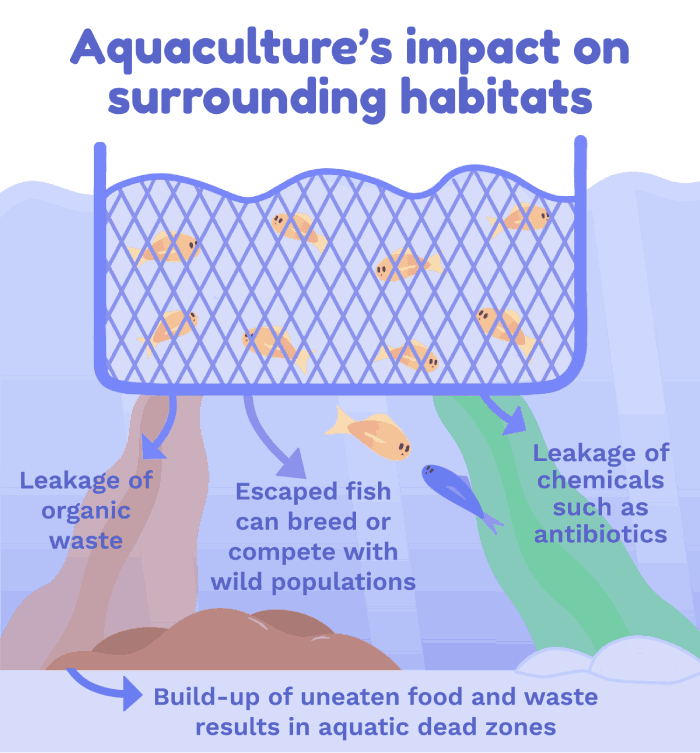
Aquaculture’s impact on surrounding habitats
Can we make animal products more sustainable?
Perhaps the most obvious way of reducing emissions from animal farming is to reduce how much meat we eat. By removing animal products from our diets, greenhouse gas emissions from the food sector could be reduced by nearly 50%!
However, as there is still a demand for animal products, what can farmers do to reduce their environmental impact? 85% of the emissions from animal farming come from animal feed and how it’s digested, so making changes to animal feed is a good place to start.
Feeding animals more digestible foods can reduce how much methane they produce and means that the animals waste less energy on digesting the feed itself. For example, including seaweed in a cow’s diet reduces methane emissions by over 50%
!
As well as reducing direct emissions, switching to more sustainable animal feed will reduce the amount of land and resources taken up by animal farming.
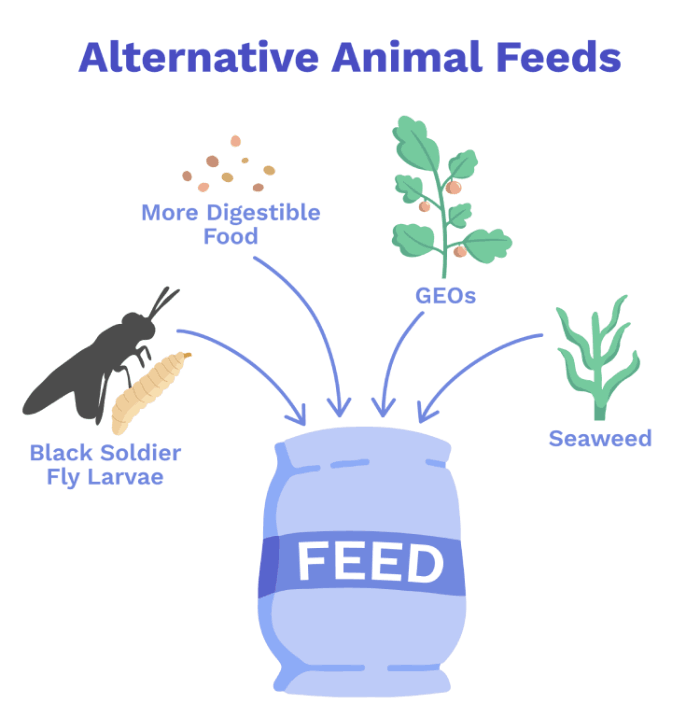
Potential Animal Feeds
Changing what we feed to animals is just one way of reducing the impact of animal farming on the environment. Check out the “Advanced” version of this course to learn about other solutions!
What are the alternatives to animal farming?
By combining and processing plant-based ingredients, companies hope to create protein-rich food with the same taste and texture as animal products, without the environmental impact. Many have already reached our supermarkets, from burgers that “bleed” beetroot juice
to “eggs” made from mung beans
.
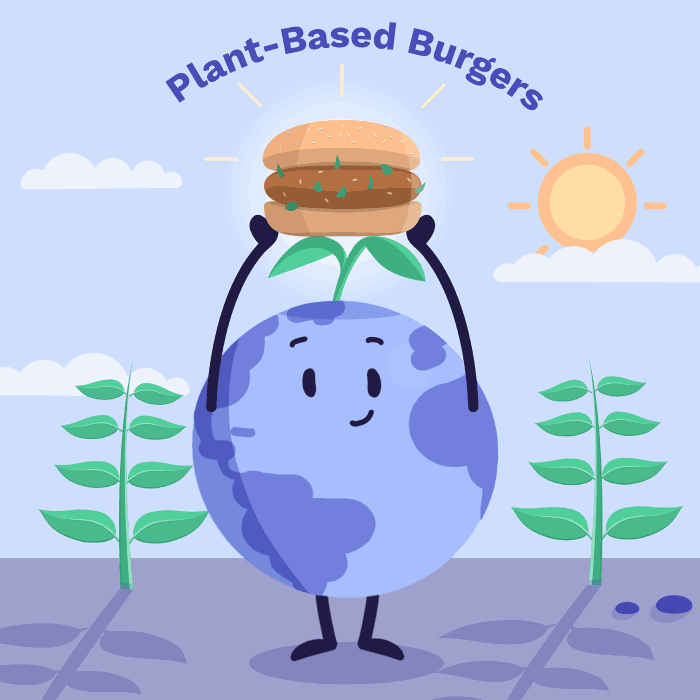
Plant-based burgers
Others have genetically engineered microbes to produce specific molecules that are responsible for the taste and nutritional content of animal meat. In fact, scientists are now able to grow animal cells in the lab to produce food that is essentially chemically identical to meat
! Check out the “Advanced” version of this course to learn more about these exciting projects.
Conclusion
Animal farming is a major source of greenhouse gas emissions and environmental pollution. Changes to farming practices can considerably reduce the negative impacts of this sector on our planet, but farmers can only do so much!
By reducing our meat consumption and shifting to more plant-based diets, we can significantly reduce our individual carbon footprint.
Now that we’ve discussed emissions from food production, let’s have a look at the rest of the food supply chain!
Next Chapter

